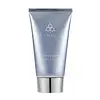What's inside
What's inside
 Key Ingredients
Key Ingredients

 Benefits
Benefits

 Concerns
Concerns

 Ingredients Side-by-side
Ingredients Side-by-side

Salicylic Acid 2%
MaskingWater
Skin ConditioningMethylpropanediol
SolventAlcohol Denat.
AntimicrobialGlycerin
HumectantHydroxyethyl Acrylate/Sodium Acryloyldimethyl Taurate Copolymer
Emulsion StabilisingXanthan Gum
EmulsifyingSodium Hydroxide
BufferingZinc Gluconate
Skin ConditioningAcacia Senegal Gum
MaskingAllantoin
Skin ConditioningAloe Barbadensis Leaf Juice
Skin ConditioningEpilobium Angustifolium Flower/Leaf/Stem Extract
Skin ConditioningWater
Skin ConditioningGlycerin
HumectantButyrospermum Parkii Butter
Skin ConditioningCaprylic/Capric Triglyceride
MaskingCholesteryl Oleyl Carbonate
Skin ConditioningCoco-Caprylate/Caprate
EmollientCholesteryl Stearate
EmollientCholesteryl Nonanoate
EmollientCetearyl Alcohol
EmollientDiaminopropionoyl Tripeptide-33
Skin ConditioningCaprylyl Glycol
EmollientLonicera Caprifolium Flower Extract
PerfumingGlyceryl Stearate
EmollientCetearyl Glucoside
EmulsifyingDicaprylyl Ether
EmollientPolyglyceryl-4 Caprate
EmulsifyingXanthan Gum
EmulsifyingGluconolactone
Skin ConditioningLeuconostoc/Radish Root Ferment Filtrate
AntimicrobialMelia Azadirachta Leaf Extract
Skin ConditioningCitrus Reticulata Peel Oil
MaskingMelia Azadirachta Flower Extract
Skin ConditioningZea Mays Silk Extract
Skin ConditioningAmino Esters-1
Skin ConditioningEclipta Prostrata Extract
Skin ConditioningCocos Nucifera Fruit Juice
EmollientCymbopogon Schoenanthus Oil
MaskingFructooligosaccharides
HumectantOryza Sativa Bran Oil
EmollientThioctic Acid
AntioxidantPopulus Tremuloides Bark Extract
AntiseborrhoeicSodium Hydroxide
BufferingPhenyl T-Butylnitrone
AntioxidantLonicera Japonica Flower Extract
Skin ConditioningCoccinia Indica Fruit Extract
Skin ConditioningEthylhexylglycerin
Skin ConditioningCitrus Grandis Peel Oil
MaskingCitrus Limon Peel Oil
MaskingCopper Gluconate
Skin ConditioningSolanum Melongena Fruit Extract
Skin ConditioningAloe Barbadensis Flower Extract
EmollientPyruvic Acid
MaskingCalcium Gluconate
HumectantCurcuma Longa Root Extract
MaskingOcimum Sanctum Leaf Extract
Skin ConditioningOcimum Basilicum Leaf Extract
Skin ConditioningLawsonia Inermis Leaf Extract
Skin ConditioningPearl Powder
Moringa Oleifera Seed Oil
EmollientSimmondsia Chinensis Seed Oil
EmollientLawsonia Inermis Extract
AntimicrobialCorallina Officinalis Extract
Skin ConditioningBHT
AntioxidantPhenoxyethanol
PreservativeSodium Benzoate
MaskingPotassium Sorbate
PreservativeLimonene
PerfumingCitral
PerfumingGeraniol
PerfumingEugenol
PerfumingLinalool
PerfumingFarnesol
PerfumingWater, Glycerin, Butyrospermum Parkii Butter, Caprylic/Capric Triglyceride, Cholesteryl Oleyl Carbonate, Coco-Caprylate/Caprate, Cholesteryl Stearate, Cholesteryl Nonanoate, Cetearyl Alcohol, Diaminopropionoyl Tripeptide-33, Caprylyl Glycol, Lonicera Caprifolium Flower Extract, Glyceryl Stearate, Cetearyl Glucoside, Dicaprylyl Ether, Polyglyceryl-4 Caprate, Xanthan Gum, Gluconolactone, Leuconostoc/Radish Root Ferment Filtrate, Melia Azadirachta Leaf Extract, Citrus Reticulata Peel Oil, Melia Azadirachta Flower Extract, Zea Mays Silk Extract, Amino Esters-1, Eclipta Prostrata Extract, Cocos Nucifera Fruit Juice, Cymbopogon Schoenanthus Oil, Fructooligosaccharides, Oryza Sativa Bran Oil, Thioctic Acid, Populus Tremuloides Bark Extract, Sodium Hydroxide, Phenyl T-Butylnitrone, Lonicera Japonica Flower Extract, Coccinia Indica Fruit Extract, Ethylhexylglycerin, Citrus Grandis Peel Oil, Citrus Limon Peel Oil, Copper Gluconate, Solanum Melongena Fruit Extract, Aloe Barbadensis Flower Extract, Pyruvic Acid, Calcium Gluconate, Curcuma Longa Root Extract, Ocimum Sanctum Leaf Extract, Ocimum Basilicum Leaf Extract, Lawsonia Inermis Leaf Extract, Pearl Powder, Moringa Oleifera Seed Oil, Simmondsia Chinensis Seed Oil, Lawsonia Inermis Extract, Corallina Officinalis Extract, BHT, Phenoxyethanol, Sodium Benzoate, Potassium Sorbate, Limonene, Citral, Geraniol, Eugenol, Linalool, Farnesol
Ingredients Explained
These ingredients are found in both products.
Ingredients higher up in an ingredient list are typically present in a larger amount.
Glycerin is already naturally found in your skin. It helps moisturize and protect your skin.
A study from 2016 found glycerin to be more effective as a humectant than AHAs and hyaluronic acid.
As a humectant, it helps the skin stay hydrated by pulling moisture to your skin. The low molecular weight of glycerin allows it to pull moisture into the deeper layers of your skin.
Hydrated skin improves your skin barrier; Your skin barrier helps protect against irritants and bacteria.
Glycerin has also been found to have antimicrobial and antiviral properties. Due to these properties, glycerin is often used in wound and burn treatments.
In cosmetics, glycerin is usually derived from plants such as soybean or palm. However, it can also be sourced from animals, such as tallow or animal fat.
This ingredient is organic, colorless, odorless, and non-toxic.
Glycerin is the name for this ingredient in American English. British English uses Glycerol/Glycerine.
Learn more about GlycerinSodium Hydroxide is also known as lye or caustic soda. It is used to adjust the pH of products; many ingredients require a specific pH to be effective.
In small amounts, sodium hydroxide is considered safe to use. However, large amounts may cause chemical burns due to its high alkaline.
Your skin has a natural pH and acid mantle. This acid mantle helps prevent harmful bacteria from breaking through. The acid mantle also helps keep your skin hydrated.
"Alkaline" refers to a high pH level. A low pH level would be considered acidic.
Learn more about Sodium HydroxideWater. It's the most common cosmetic ingredient of all. You'll usually see it at the top of ingredient lists, meaning that it makes up the largest part of the product.
So why is it so popular? Water most often acts as a solvent - this means that it helps dissolve other ingredients into the formulation.
You'll also recognize water as that liquid we all need to stay alive. If you see this, drink a glass of water. Stay hydrated!
Learn more about WaterXanthan gum is used as a stabilizer and thickener within cosmetic products. It helps give products a sticky, thick feeling - preventing them from being too runny.
On the technical side of things, xanthan gum is a polysaccharide - a combination consisting of multiple sugar molecules bonded together.
Xanthan gum is a pretty common and great ingredient. It is a natural, non-toxic, non-irritating ingredient that is also commonly used in food products.
Learn more about Xanthan Gum